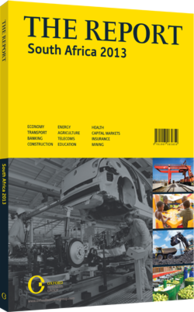OBG talks to Roger Jardine, CEO, Aveng Group

Interview: Roger Jardine
How dependent are South African construction firms’ local order books on government projects?
ROGER JARDINE: For many of the country’s larger construction firms that rely on and handle big-ticket projects, our business mix has shifted abroad, although we remain South African-domiciled companies. This is not deliberate, but the reality is that you “fish where the fish are”, and for the past few years infrastructure spending in South Africa has slowed down. Certainly, as an industry this is concerning since our growth is dependent on order books. But it is also worrying on a more general level, as infrastructure is one way to really assist in addressing societal issues and challenges. Post-World Cup, the sector has shed around 10,000 jobs, and much-needed national projects are not breaking ground.
Have the right priorities been selected by the Presidential Infrastructure Coordinating Commission?
JARDINE: The projects appear well planned and comprehensively thought through with few flaws in terms of selecting the areas that will have maximum social and economic benefit. It now comes down to the capacity of the public sector to implement the plan effectively. As an industry, we are optimistic, but cautiously so. While many large projects are on the table, they have already been so for some time. The statement of intent from government is there. We now need the structures in place to ensure effective execution. We have seen some progress on renewable energy contracts, and this stands out as one exception where projects are actually being executed. This is partly because renewable energy is a new and complex field and acknowledging this, the government has engaged private sector counterparts in the bidding process. For other big projects, a similar approach is needed and this could serve as a model for other areas of infrastructure development to follow. Something critical with big infrastructure projects is pacing and staging. You need to ensure that major projects follow each other in order to avoid building up demand for workers, skills and materials, and then all of a sudden having the demand dry up. Once a project ends, you also need to make sure it has a sustained impact in terms of job creation, as otherwise employment gains are temporal.
To what extent is the promotion of local content in manufacturing and construction having success?
JARDINE: When spending billions on a project, you want to have as much to show for it as possible. Not just in terms of the physical infrastructure that was built, but in terms of the contribution towards industrialisation and growth in local manufacturing and construction capabilities that came as a result. Tenders are being increasingly prescriptive towards local content stipulations, and localisation requirements are stronger than ever. However, as mentioned before, the projects announced are not necessarily materialising. Where there is activity, capital will follow. The building materials industry is waiting and willing to ramp up production capacity if and when firms see a robust market ahead of them. Given the myriad of projects being planned, a stronger overall partnership between the public and private sector will be required to expedite delivery. South African construction firms have such a depth of skills in a range of areas that it would be unfortunate not to utilise them.
The private sector should not only be used in terms of its technical skills and project management expertise, but given constraints on state finances, should also be leveraged for their balance sheets through offering more equity participation. A number of South African companies have experience and a successful track record with public-private partnerships elsewhere, and we would like more of the same on home soil. This requires an investment climate in which the private sector feels comfortable and secure. While the cancellation of projects and tenders is not unique to South Africa and something we sometimes experience elsewhere, it is still not optimal and can be discouraging.
You have reached the limit of premium articles you can view for free.
Choose from the options below to purchase print or digital editions of our Reports. You can also purchase a website subscription giving you unlimited access to all of our Reports online for 12 months.
If you have already purchased this Report or have a website subscription, please login to continue.

